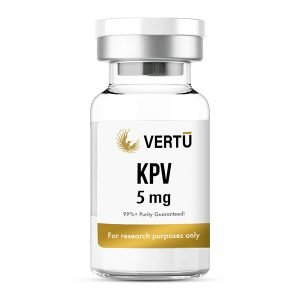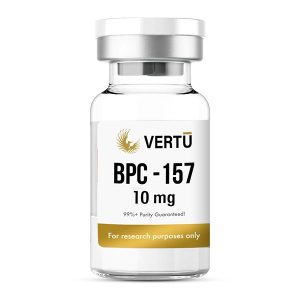-

CJC 1295 5mg
$95.00Modified GRF (1-29) serves as a peptide analogue derived
from growth-hormone-releasing hormone (GHRH). Its
development in the 1980s stemmed from the revelation
that the initial 29 amino acids of GHRH preserved all
characteristics of the complete 44-amino-acid protein. The
original protein, GRF (1-29), represents the smallest
fragment of GHRH maintaining its entire functionality.
Another abbreviated synthetic variation, known as
Sermorelin or GRF 1-29, comprises 29 amino acids,
whereas Modified GRF (1-29) undergoes further
modifications by substituting four amino acids within its
chain. These substitutions are aimed at preventing
degradation and oxidation during manufacturing,
transportation, and within the body, concurrently
enhancing its affinity to bind with GHRH receptors.
While GRF exhibited full efficacy, its short half-life (less
than 10 minutes) limited its duration of action.
Consequently, researchers modified GRF (1-29) to extend
its half-life, thus amplifying its therapeutic potential.
Occasional references to Modified GRF (1-29) include
terms like mod GRF or tetrasubstituted GRF (1-29),
emphasizing the distinction from GRF (1-29) due to the
alteration of four amino acids. Notably, Modified GRF (1-
29) mirrors CJC-1295 without DAC in its composition. -

GHK 50 mg
$70.00GHK, a tripeptide consisting of glycyl-histidyl-lysine in its
amino acid sequence, is naturally present in human
plasma, saliva, and urine. Its concentration in plasma
typically measures around 200 ng/mL at the age of 20,
diminishing to approximately 80 ng/mL by the age of 60.
This reduction in GHK levels aligns with the observable
decline in an organism’s regenerative capabilities.
Extensive scientific investigations have unveiled GHK’s
potential role in aiding wound healing, managing infections,
promoting hair growth, addressing aspects of cancer,
supporting cognitive health, and exploring cosmetic
applications for facial enhancement. -

Ipamorelin 10mg
$80.00Ipamorelin represents a concise peptide sequence with the
capability to attach to the ghrelin/growth hormone
secretagogue receptor. Among the known growth hormone
(GH) secretagogues, it stands out for its remarkable
selectivity. Laboratory investigations have demonstrated
that ipamorelin exerts no influence on the release of ACTH,
prolactin, follicle-stimulating hormone, luteinizing hormone,
thyroid-stimulating hormone, or cortisol [¹]. Its exceptional
specificity has sparked interest in both therapeutic
applications and as a model peptide for comprehending
the mechanisms behind selective receptor binding. -

-

Melanotan-I 10 mg
$40.00Melanotan 1, a synthetic analogue derived from alphamelanocyte stimulating hormone, is clinically utilized in
Europe to prevent sun-induced skin damage, particularly
phototoxicity, in individuals affected by erythropoietic
protoporphyria. Initially formulated as a sunless tanning
solution, Melanotan 1 exhibits various physiological effects
on blood pressure, feeding patterns, central nervous
system functionality, and more. Currently, the peptide is
undergoing phase 3 clinical trials for treating polymorphose
light eruption and is in phase 2 trials for managing actinic
keratosis—a specific sun-induced skin damage
condition—and its severe variant, squamous cell
carcinoma.














